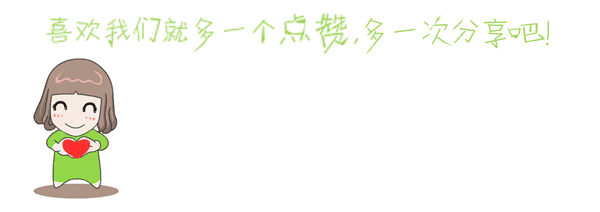Aconite
“Aconite” is named because it “grows attached to the Aconitum plant.” Li Shizhen used the common taro as a metaphor to explain the relationship between Aconitum and Aconite. The Aconitum is likened to the “taro king” (commonly known as taro), while Aconite is like the tuber that grows around the “taro king.” In other words, Aconitum and Aconite are both from the same plant, but Aconitum is the main root, while Aconite is the lateral tuber (sub-root) cultivated from it, with Aconite being more commonly used in clinical practice.

If rhubarb and Coptis are representatives of cold herbs in traditional Chinese medicine, then the hot herbs must include Aconite and Aconitum. As a herb for reviving yang and rescuing from collapse, Aconite is the main herb used by Zhang Zhongjing to save the yang qi that is weak (including what is now referred to as shock) and to resolve internal cold and dampness. Therefore, the ancients praised it for its ability to “expel cold and revive yang, and to bring the dead back to life,” capable of “cutting through barriers and defeating enemies.” Additionally, Aconite and Aconitum can dispel cold, eliminate dampness, and relieve pain, widely used to treat various cold and damp diseases such as cold hernia abdominal pain, yang deficiency edema, cold pain in the heart and abdomen, and wind-cold-damp bi syndrome. If the diagnosis is accurate, it can often lead to a quick resolution of the illness. The prepared Aconite in the formula Li Zhong Wan is also very effective for treating various diseases caused by spleen and stomach deficiency and cold.
Historical Use of Aconite
According to research, Aconitum may be one of the earliest documented medicinal herbs. The character “jin” appears in oracle bone inscriptions over 3000 years ago, and Han Dynasty scholar Jia Kui believed that “jin” referred to Aconitum. In the 7th century BC, Li Ji used “jin” in meat to harm political enemies. The “Fifty-Two Disease Formulas” unearthed from the Mawangdui Han tomb also utilized Aconitum, thus confirming Aconitum as one of the earliest known medicinal herbs.
In ancient Chinese materia medica, Aconitum, Aconite, and Tianxiong are three seemingly unrelated herb names, but they are actually “from the same mother,” all derived from the Ranunculaceae family plant Aconitum carmichaeli Debx. The dried main root of this plant is called Aconitum; its dried lateral root, either directly or after processing, is referred to as Aconite or processed Aconite; the root that is larger and slender is called Tianxiong. The 2010 edition of the Chinese Pharmacopoeia lists Aconitum as the legal source species for both Chuanwu (Aconitum) and Aconite.
Aconitum and Aconite were first recorded in the “Shennong Bencao Jing.” This text notes that the juice of Aconitum, when boiled, is called “she wang,” which can kill birds and beasts. This indicates that by the Han Dynasty at the latest, people were already able to extract the toxic components of Aconitum to create arrow poison for hunting. To use such a highly toxic herb for treatment, it is evident that processing to reduce toxicity is necessary. By the late Eastern Han Dynasty, Zhang Zhongjing had already mastered the technique of processing Aconite, with 21 formulas containing Aconite in the “Shanghan Lun.”
However, Aconite is indeed very warming, and if not processed properly, it can still be toxic. Therefore, ancient scholars had varying opinions on Aconite. For example, Zhu Danxi, a leading figure of the Yin-nourishing school in the Yuan Dynasty, acknowledged that Aconite could be used appropriately to warm yang and promote dampness, but he pointed out that herbs like Aconitum, which are robust and powerful, if habitually used as wind-cold herbs and tonics, could lead to many deaths. The warming and tonifying school of the Ming Dynasty regarded Aconite as a key herb for warming and tonifying the fire of the life gate, highly praising it. After the Qing Dynasty, the warm disease school emerged, primarily using cooling herbs, and they feared Aconite like a tiger. This trend continued into the early Republic of China. However, some physicians in Sichuan were adept at using hot herbs like Aconite, known as the “Fire God School.” The famous physician Zhu Weiju, born in Sichuan during the Republic of China, was also skilled in using Aconite. He later practiced medicine in Shanghai, developing a unique style and earning the nickname “Zhu Aconite.”
Historically, there are many legends about Aconitum and Aconite. People named Aconitum based on the shape of its main root, which resembles an inverted cone, similar to a crow’s head. The lateral root, which adheres to the main root, is called Aconite, as if mother and child are together. The ancients would pound fresh Aconitum to extract juice, which was then dried into a paste for use as arrow poison. Hunters and warriors could shoot arrows that would cause their prey to fall and enemies to fall off their horses, primarily due to the rapid action of Aconitine on the heart and nervous system.
Processing Techniques
Using toxic herbs to treat diseases is commonly referred to as “using poison to attack poison,” but there is a problem of side effects. Traditional Chinese medicine has long recognized this issue, which is why there is a saying in TCM theory that one should expel evil without harming the righteous, meaning that treating illness should not harm the body. How can this be achieved? The uniqueness of TCM lies in reasonable prescriptions and careful processing. The former involves the rational combination of herbs to counteract each other and reduce toxic side effects; the latter employs various processing techniques to alter the properties of the herbs, reducing toxicity and enhancing efficacy.
Regarding the processing of Aconitum, ancient TCM practitioners had already accumulated a wealth of methods to reduce toxicity and enhance efficacy. Jiangyou County in Sichuan, the hometown of the great poet Li Bai, is also currently the place with the most complete processing methods for Aconite. Historically, there have been dozens of documented processing methods for Aconite, many of which have been lost or are rarely used today. Currently, there are about nine existing processing methods for Aconite. During the processing, the highly toxic dimeric alkaloids originally contained in the raw product are hydrolyzed into less toxic monomeric alkaloids.
Currently, the three most common processed forms of Aconite on the market are “salted Aconite,” “black shun slices,” and “white Aconite slices.” The toxicity of processed Aconite can be reduced by 70% to 80%, which aligns with TCM theory that the harshness of the herb is greatly diminished after processing.
Correct Usage
TCM theory holds that Chuanwu (Aconitum) has the effects of dispelling wind and dampness, warming the meridians, and relieving pain, primarily treating wind-cold-damp bi syndrome, various cold pains, and injuries from falls. Clinically, it is used to treat rheumatic arthritis, surgical anesthesia, headaches, toothaches, strokes, and external ulcers. Common prescriptions include Compound Aconitum Decoction and Xiao Huoluo Dan.
Aconite has the effects of reviving yang, rescuing from collapse, and eliminating cold and dampness, primarily treating deficiency of the original yang, excess of internal cold, wind-cold-damp bi syndrome, and water retention and swelling. In modern clinical practice, Aconite is also used to treat rheumatic and rheumatoid arthritis, arrhythmias, infectious shock, and polyarteritis, with common prescriptions including Si Ni Tang and Hui Yang Jiu Ni Tang.
The safe use of Aconitum has been a concern for physicians throughout history. The “Eighteen Contradictions” of TCM clearly state that Aconitum is incompatible with certain herbs such as Fritillaria, Trichosanthes, Pinellia, and others. Some studies suggest that the Eighteen Contradictions should also include Aconite.
Ancient people’s understanding of the toxicity of medicinal herbs was gained through personal experience, hence the saying, “Shennong tasted a hundred herbs and encountered seventy poisons in one day.” As stated in the “Zhou Li,” “If the ruler is ill and drinks medicine, the minister must taste it first. If a relative is ill and drinks medicine, the child must taste it first.” In fact, unlike the common notion that certain substances can cause harm to the body and are thus toxic, in TCM, “toxicity” refers to the herb’s biased properties. Great toxicity or extreme toxicity means that the effective dose is very close to the toxic dose. The Chinese Pharmacopoeia clearly stipulates that the total amount of dimeric alkaloids in Aconite slices must not exceed 0.010% to control toxicity; the total content of effective alkaloids, measured as Aconitine, must not be less than 1.0% to ensure efficacy. The pharmacopoeia also specifies that the common dosage of Aconite is 3.0 to 15 grams. When used as a guiding herb to enhance tonifying effects, the common dosage is 1.5 to 4.5 grams; when used to strengthen the heart and warm the middle to dispel cold and relieve pain, the common dosage is 4.5 to 9.0 grams. When used to revive yang and rescue from collapse, Aconite is often used in large doses, but not exceeding the toxic dose.
Aconite is a herb that evokes both love and fear. To use it skillfully, one must invest effort in understanding and observing it. Ming Dynasty scholar Li Shizhen’s experience was: “Aconitum and Aconite are toxic herbs, used only for critical illnesses. When used as a tonic, a small amount should be added to guide its effects, and its efficacy is very swift!” He also pointed out that the tolerance for Aconite varies from person to person; some may feel discomfort after a small amount, while others may drink Aconite decoction daily for years without issue. Modern research on Aconite is increasing, which will certainly benefit the safe use of Aconite in treating diseases.
For thousands of years, Aconitum and Aconite have received mixed reviews. Both possess remarkable efficacy and extreme toxicity; if used properly, they can achieve remarkable effects in severe conditions, but if used carelessly, they can be dangerous. The key lies in whether the user understands the herb.
 Previous Highlights
Previous Highlights
Talking about Herbs | Ejiao – An Ancient Tribute, A Modern Medicine
Talking about Herbs | Ephedra – The Prominence of Chinese Medicine in the West
Herb Query

Long press to recognize the QR code to follow
Herb Query is the official WeChat public account for querying Chinese medicinal herbs, making it convenient for users to find the desired herbal information anytime and anywhere, greatly promoting the essence of Chinese medicine that has been around for over 5000 years.


